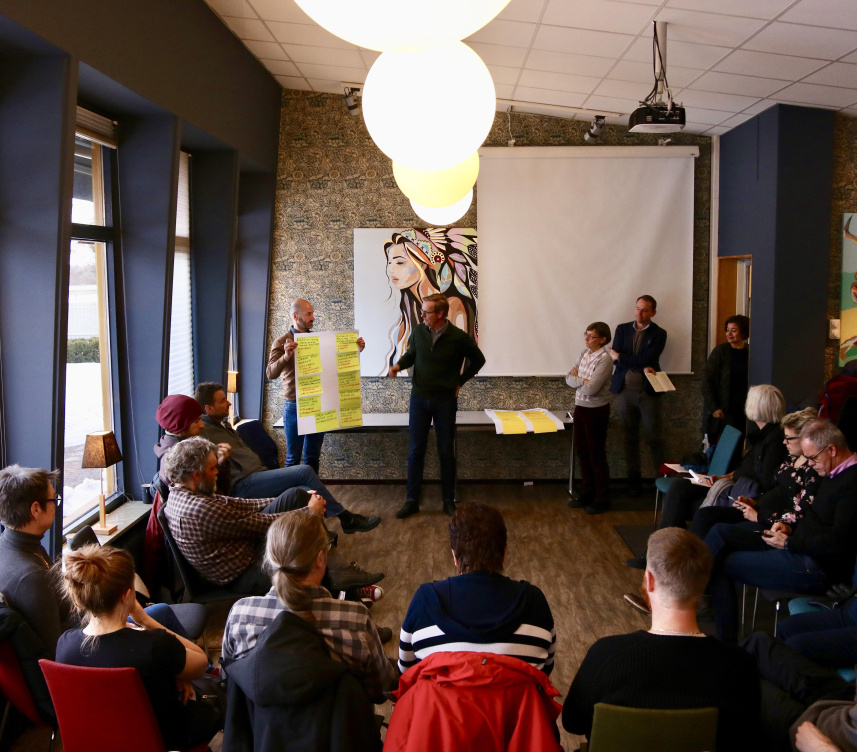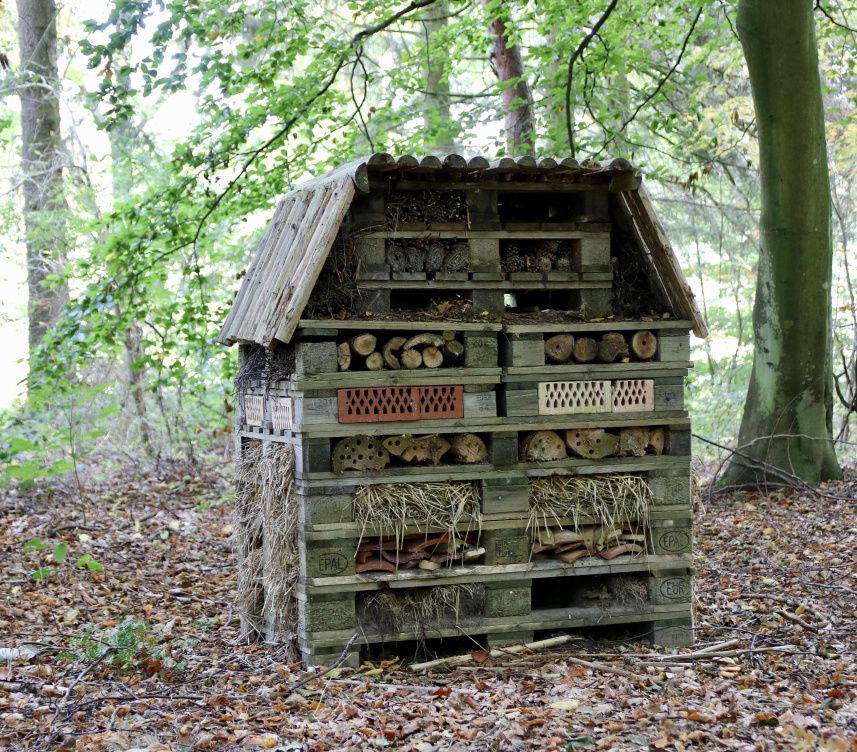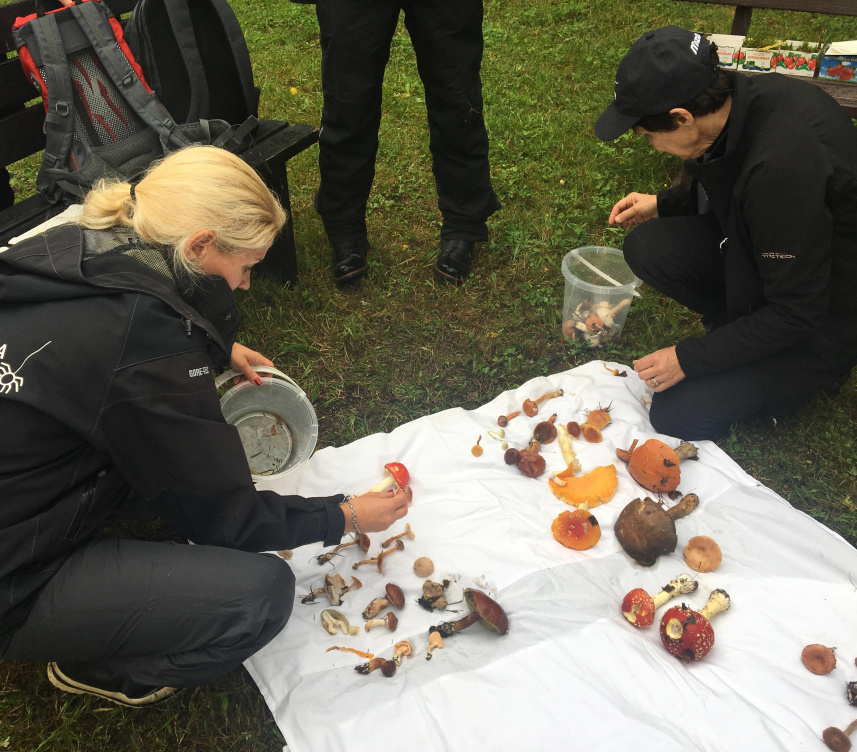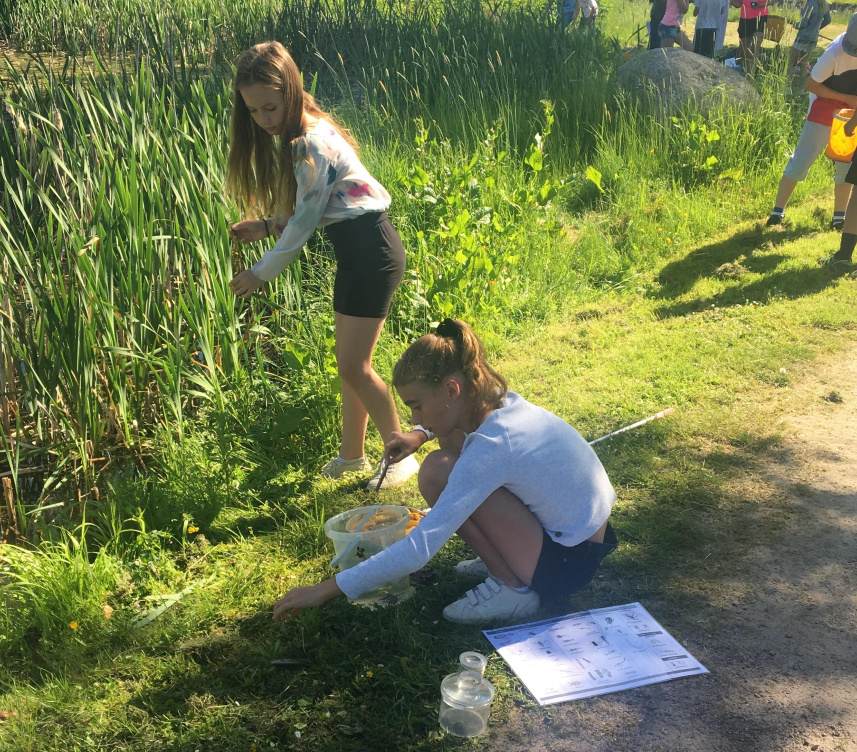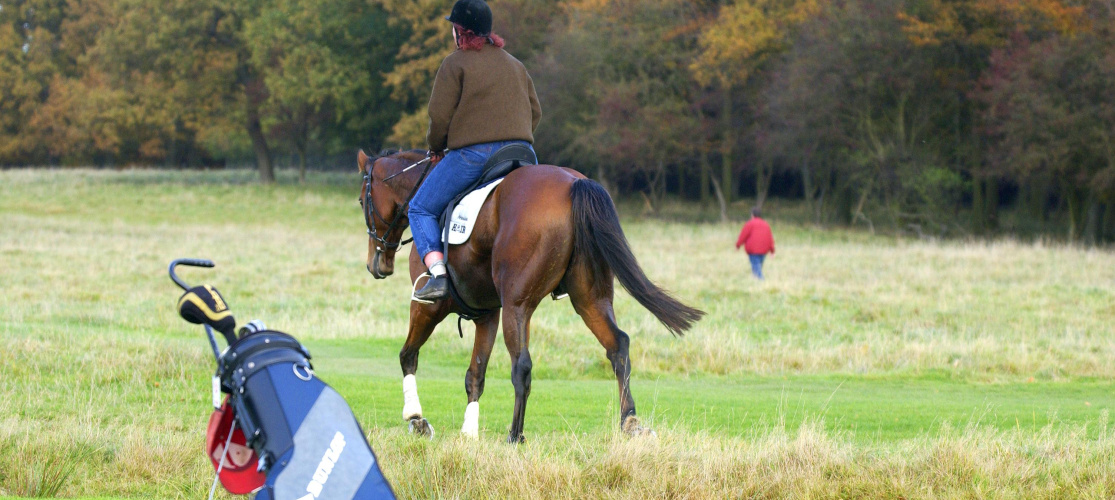

Societal Benefits of Multifunctional Golf Facilities
Societal benefits of multifunctional golf facilities
By Maria Strandberg & Bruno Hedlund, Scandinavian Turfgrass and Environment Research Foundation
E-mail: maria.strandberg@golf.se bruno.hedlund@golf.se
This article is based on a survey about multifunctional activities on Nordic golf facilities. The practical examples of multifunctional activities we present are based on experiences from a selected number of golf facilities. The examples show how Nordic golf clubs are working with multifunctional activities and creating important assets for the golf facilities and for society. Our hope is that these examples will inspire others to take initiative to create multifunctional activities on golf courses, and thereby demonstrate the societal benefits of golf and contribute to implementation of the UN Sustainable Development Goals in the 2030 Agenda.
Workshop at Linköpings GC with Jacon Coleman Nielsen.
Multifunctionality
Multifunctional golf courses are currently an untapped resource. These can help increase the societal benefits of golf if operations are run with a holistic perspective in which the efficient use of green areas and public interest in nature and recreation are central. In addition to offering a high-quality arena for golf, golf facilities could also contribute, e.g., to improving biological diversity, conserving natural and cultural environments, providing classrooms for outdoor education, and providing recreation areas that are open to the public. Urban landscapes are today home to the majority of the world’s population and it is predicted by the UN that 66% will live in cities by 2050. Areas for recreation will be used by more people in the future. The decreasing amount of green area per capita increases the pressure on these areas to provide multiple ecosystem services. From this perspective, multifunctionalgolf facilities can become a place for the benefit of the local community and nature values.
Many golf courses are currently experiencing economic problems and are attempting to find new ways of supporting and expanding their operations. Multifunctional use of the golf facility can add important values for the golf club. For example, it can enhance the influence of golf in the local community, expose golf to new groups in society and attract new members, increase favorable media coverage, increase the marketing value, create a more favorable profile among the general public, and attract stronger political support.
Hotel for insects at Asserbo GC
Multifunctional golf facilities in the Nordic countries
Golf is a land-demanding sport that occupies more than 65,000 ha in the Nordic countries. The Nordic golf associations have around 900,000 members and over 900 golf courses. To investigate ongoing multifunctional activities on Nordic golf facilities, a survey was conducted by STERF during 2017. The survey was sent to all Nordic golf facilities.
The results show that external partnerships are an important factor for the development of golf. The form and direction of these partnerships must be adapted to meet the particular challenges facing golf courses, local societies and regions. The partnerships must also be all-encompassing and include different groups of actors such as local authorities, national agencies, other clubs and associations, landowners, residents, businesses, et cetera. Golf clubs can contribute to increased multifunctionality at the landscape level by collaborating with other actors in the landscape, and in this way strengthen their position in the implementation of the UN Sustainable Development Goals in the 2030 Agenda.
The results also show that golf courses can contribute to increased biological diversity, conservation of natural and cultural environments and retention and expansion of ecosystem services in environments around towns and cities and in the cultivated landscape. They can help protect, preserve, restore and recreate important habitats, ecosystem functions and natural processes. The survey showed that approximately 40% of the Nordic golf clubs have conducted flora and fauna inventories, and more than 50% are working to increase biodiversity on the golf course. These results show that golf courses can be important actors in collaborations on green infrastructure. Many golf courses, 40%, have revealed their cultural monuments through setting up information boards and installing footpaths leading to these objects.
About 60% of the golf clubs are increasing their accessibility and participation, thereby improving the conditions for good quality of life and better mental and physical health for more groups in society, e.g., through providing a broader active outdoor life, experiences of nature and better climate adaptation in the urban landscape. Roughly 30% of the golf clubs, mainly in the rural landscape, are offering activities to improve the golf club economy, for example snow clearance, forest clearing, and lawn keeping. One quarter of the clubs are offering rooms and cabins to rent, and camping.
Training day for teachers
Examples of multifunctional activities
The following examples show multifunctional activities on four Nordic golf facilities and describe some added values to the golf club.
The golf course as an arena for biodiversity and green infrastructure
Chalmers Golf Club, Sweden, has already set up an environmental policy and plans for sustainable development of the golf course and the surroundings. The club has made thorough inventories of flora and fauna and, based on these, formed development and maintenance plans to preserve and increase biodiversity. The latest action is to act as biotope host for red listed frogs and salamanders. According to Swedish environmental laws, any building or construction projects that influences the natural environment of threatened species,must take compensatory measures to assure that the overall natural environment is not negatively affected. An existing lake ecosystem was drained when a large road was built close to the golf club and the builders were forced to recreate a new wetland area for frogs and salamanders. The golf club, in cooperation with the builders and the traffic and environmental authorities, designed, planned and built a new lake ecosystem area for red-listed amphibians on the 18-hole golf course. The benefits for the golf club were substantial.
Added value for Chalmers Golf Club:
- A strategic investment in the golf course was financed by the road builders.
- Improved playing quality and playing strategy for two golf holes.
- Improved drainage of several golf holes and surroundings.
- The club strengthened its public relations.
- The club contributes to preserving important local biodiversity.
- Growing interest about biodiversity on the golf course among members
- The builders will in the future subsidize the maintenance cost for the new lake ecosystem area.
The golf course as a social and sports arena
Copenhagen golf club in Denmark leases its land, which is located in Jägerborg Animal Park. The park is a large nature reserve with huge old trees and open areas where large numbers of visitors come to walk in the forest, play golf, cycle, jog or ride. All have an equal right to be in the area and all show great consideration for one another. Golfers and the club are aware that they are guests in the park, despite the club having been there for more than 100 years. The golf club has to take account of the almost 2,000 free-ranging red deer that live in the park, which give the course a unique character and a sense of exclusivity. Twice a year, the golfers have to make way for major public events – the Hubertus Hunt, where a large number of horses, riders and supporters can be found on the land, and the Hermitage Race, when almost 20,000 runners and spectators pass over parts of the golf course. The trails around the golf course are used by Copenhagen schools during national outdoor days. In addition, there are bridleways around and through the golf course that are used daily by riders from the neighbouring riding school. The golf course area is popular among mushroom pickers, because mushrooms are easy to find in the well-trimmed grass.
Added values for Copenhagen Golf Club:
- Multifunctionality is part of the club’s identity and its sense of place, and makes the club an important and appreciated part of the animal park.
- Multifunctional use has enhanced the role of golf in the local community.
- Golf has been exposed to new groups in society.
- Positive publicity for the club was created through articles in the local newspaper.
The golf course as an arena for developing cultural values
Nes Verks Golfpark in Norway is built on land used by the Nes Iron Foundry from 1665 to 1959. When the golf course was being planned, it was considered extremely important to preserve the rich cultural environments in the area. In addition to old buildings, industrial premises and machinery, there was a constructed pond and a romantic park from the 1800s, framed by the attractive cultivated landscape. The cultural heritage sites have been signposted and made easily accessible to golfers and to the public. Culture trails have been installed and signposted in collaboration with the local historical society and the Foundry Museum. The museum also organizes cultural history tours on the golf course. The golf club has set-up riverside fishing and bathing sites, which are very well used during the summer. The site is also excellent for skiing during the winter. Skiing tracks, jumps and sledging slopes are installed in collaboration with local sports clubs and the local authority.
Added values for Nes Verks Golf Park:
- The golf club is one of the highest ranked in Norway.
- The golf club has attracted new members.
- Partnerships have been established with actors outside the golf sector.
- The image of golf in the local community has been strengthened.
- The marketing value of the club has increased from a sponsorship perspective.
- The club has used the fundamental preconditions that exist in the entire area in terms of nature and culture to increase the aesthetic experience for members and guests.
The golf course as an outdoor classroom
Children´s learning can be improved if part of the teaching takes place in natural outdoor environments. In addition, the levels of stress decrease, concentration improves as well as children´s engagement and their willingness to collaborate. Access to urban green areas and natural resources close to human settlements is constantly decreasing owing to exploitation and condensation in our cities. The lack of suitable and large enough ‘green’ areas is often mentioned in discussions about outdoor education. Using the land of golf courses as outdoor classrooms could, become particularly important at a time when the majority of the world’s population live in urban landscapes and local areas suitable for outdoor activities are becoming scarce.
Motala Golf Club, Sweden, in collaboration with the local primary school, participates in an ongoing STERF project about outdoor teaching. In a close dialogue between the teachers and the golf course staff,we have investigate the best suitable methods for outdoor teaching on golf courses and the most suitable areas of the golf course to be used as an outdoor classroom. The game of golf is used to develop and train focus and concentration. As a result of the project, we will make Motala Golf Club a pilot model for outdoor teaching on golf courses and experiences from the project will be presented in guidelines for outdoor teaching. A training course for participating teachers was carried out during the autumn 2017 and, during the spring of 2018, it was is time for the children to visit their new classroom at the golf course.
Added value for Motala Golf Club:
- Contribution to improve the education will strengthen the role of the golf club as an important actor in the local community.
- The good examples of biological diversity and natural and cultural values will become visible to a larger group of society, and this will enhance the role of golf as an environmentally friendly sport.
- The outdoor classroom will increase the possibilities for a larger group of children and youths to visit a golf course and thereby get a positive first encounter with the game of golf.
- Examples of innovative, active learning within the framework of this project could be used in the golf glub´s ordinary training activities for children and youth in golfing.
Children from the Smedsby School
Reed more about multifunctional golf courses
Multifunctional Golf Courses – An underutilized resource
http://www.sterf.org/sv/library/brochures-etc
Societal Benefits of Golf - Inspiration and Ideas for Local Partnership http://www.sterf.org/sv/library/handbooks/societal-benefits-of-golf
Multifunctional activities on Nordic golf facilities – a Survey
Video about outdoor teaching at Motala Golf Club
http://www.sterf.org/sv/about-sterf/news-archive/inbjudan-skolseminarium
